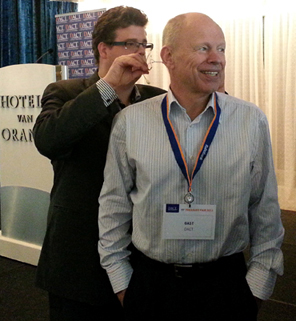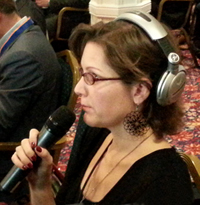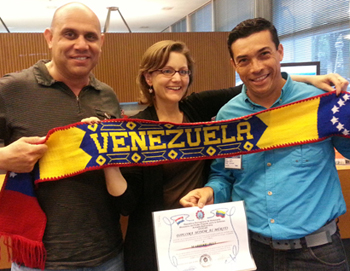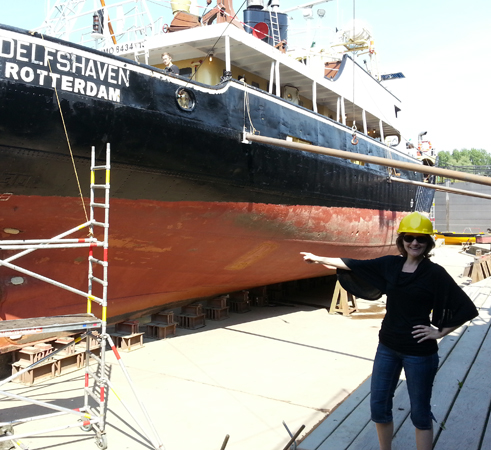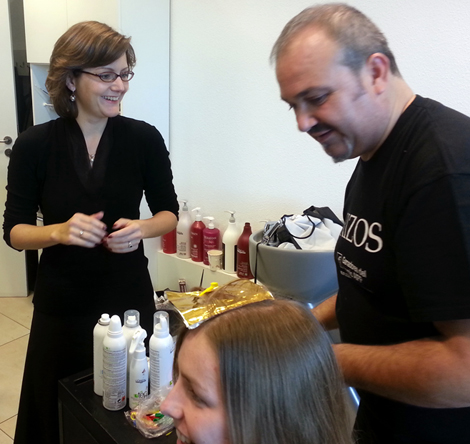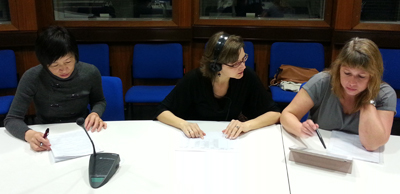 It has been a while since you last heard from me, and that is because I have been in Germersheim (Germany) to attend a course (specifically for conference interpreters) to add German as a C-language. I had been working from German for a while (for example at Europol and EWC meetings), but didn’t feel confident enough to officially add it to my CV, so when a colleague and I learned about the course, we immediately signed up. I can tell you: it’s been hard work, but very worthwhile! We now really feel that our knowledge of the German language is good enough to use it as a (passive) working language. We also realised that our active knowledge of German is still far from perfect, but well… we never intended to use German as an active (B) language anyway, so I can live with that ;-).
It has been a while since you last heard from me, and that is because I have been in Germersheim (Germany) to attend a course (specifically for conference interpreters) to add German as a C-language. I had been working from German for a while (for example at Europol and EWC meetings), but didn’t feel confident enough to officially add it to my CV, so when a colleague and I learned about the course, we immediately signed up. I can tell you: it’s been hard work, but very worthwhile! We now really feel that our knowledge of the German language is good enough to use it as a (passive) working language. We also realised that our active knowledge of German is still far from perfect, but well… we never intended to use German as an active (B) language anyway, so I can live with that ;-).
Fortunately, the course wasn’t all work and no play. 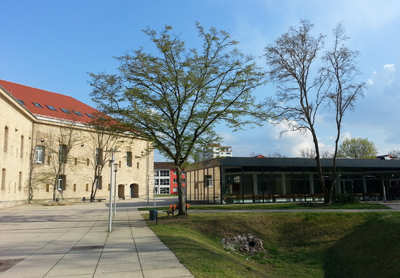 Germersheim is located in the Pfalz region, which is known for its good wines, so the faculty (which is part of the University of Mainz) had organised a wine tasting evening, as well as a traditional German ‘Kneibenabend’, which… also involves alcohol, so you get the idea. On the weekend, we visited the beautiful towns of Heidelberg, Speyer and Neustadt with the other ‘students’ (a UN staff interpreter from Geneva, a few EU-interpreters, and a number of interpreters working on the private market, all from different countries, including China). All in all, I couldn’t have wished for a better way to formally add German as a C-language!
Germersheim is located in the Pfalz region, which is known for its good wines, so the faculty (which is part of the University of Mainz) had organised a wine tasting evening, as well as a traditional German ‘Kneibenabend’, which… also involves alcohol, so you get the idea. On the weekend, we visited the beautiful towns of Heidelberg, Speyer and Neustadt with the other ‘students’ (a UN staff interpreter from Geneva, a few EU-interpreters, and a number of interpreters working on the private market, all from different countries, including China). All in all, I couldn’t have wished for a better way to formally add German as a C-language!

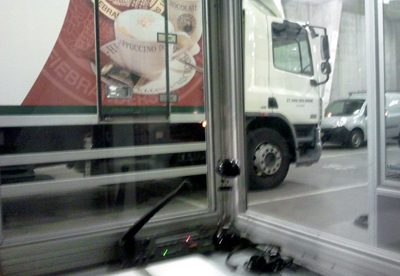 and the fact that until a few minutes before the event started, no one had even thought about putting up a screen so that we could at least see the speakers… Fortunately, one of the catering guys from upstairs was sweet enough to bring us lots of tea and coffee to keep warm, but this was definitely a ‘never again’ situation for all of us :-).
and the fact that until a few minutes before the event started, no one had even thought about putting up a screen so that we could at least see the speakers… Fortunately, one of the catering guys from upstairs was sweet enough to bring us lots of tea and coffee to keep warm, but this was definitely a ‘never again’ situation for all of us :-).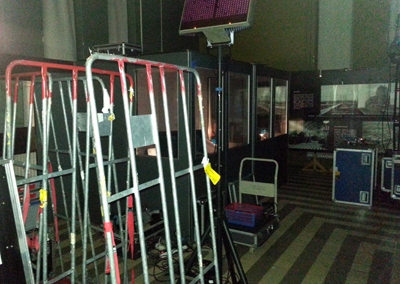 The only problem was that once the event had started, all the lights in the ‘back area’, as they called it, had to be dimmed. Which meant that it was almost impossible to leave the booth (to go to the toilet, for example), because you would immediately trip over something.
The only problem was that once the event had started, all the lights in the ‘back area’, as they called it, had to be dimmed. Which meant that it was almost impossible to leave the booth (to go to the toilet, for example), because you would immediately trip over something.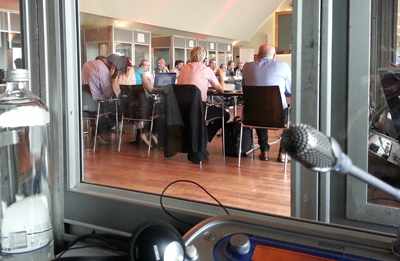 That is nice because many of us interpret for the same clients every year, which means that you get to know the delegates, and they usually like the fact that they can actually see the person who’s talking in their ear ;-). Depending on the number of languages used, a meeting usually looks like this:
That is nice because many of us interpret for the same clients every year, which means that you get to know the delegates, and they usually like the fact that they can actually see the person who’s talking in their ear ;-). Depending on the number of languages used, a meeting usually looks like this: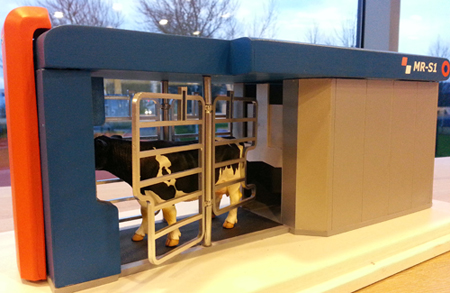 The more cows lie down, the more milk they produce. What is more, high-production cows need to be lying down a minimum of 14 hours a day. And here I was thinking that they liked standing outside in fields of grass, quietly eating the day away… Apparently, it’s the opposite. The more they rest, the better they feel, and the more milk they give. To the robot, that is. But why would they bother to walk to the robot? Because they are rewarded with concentrated feed when they do. And concentrate to cows is like chocolate to us… so I get them ;-). Once again, this conference showed me that with my job you learn something new every day… which is why I love it so much!
The more cows lie down, the more milk they produce. What is more, high-production cows need to be lying down a minimum of 14 hours a day. And here I was thinking that they liked standing outside in fields of grass, quietly eating the day away… Apparently, it’s the opposite. The more they rest, the better they feel, and the more milk they give. To the robot, that is. But why would they bother to walk to the robot? Because they are rewarded with concentrated feed when they do. And concentrate to cows is like chocolate to us… so I get them ;-). Once again, this conference showed me that with my job you learn something new every day… which is why I love it so much!